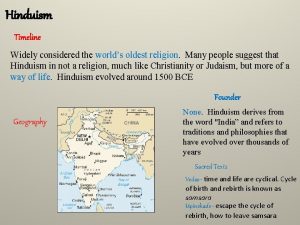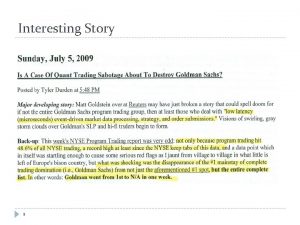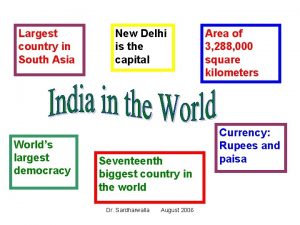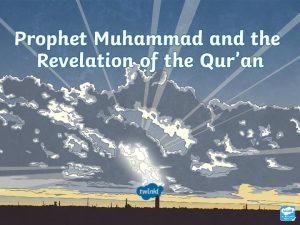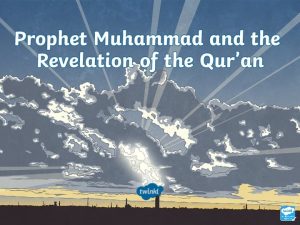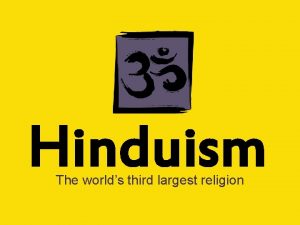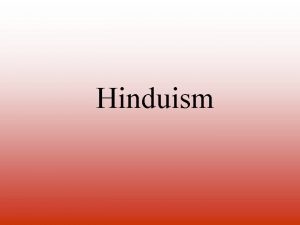Interesting Facts Worlds 5 th largest religion 26




















- Slides: 20


Interesting Facts World's 5 th largest religion 26 million followers worldwide Over 500 years old Originated in India

Sikhs believe in: • Freedom of speech, religion • Tolerance and absolute equality of all people without regard to gender, race, caste, or religion • One God common to all • Equal right for women • In earning their living honestly and through hard work • In sharing what they earn with the poor • In serving God and their fellow human beings

• Sikhs DO NOT Believe In: • Sikhs do not believe in terrorism or hurting innocent people • Sikhs do not believe in hate or racial profiling • Sikhs do not believe in war based on religion • Sikhs do not believe in fasting

How did sikhism start? • Guru nanak devji went to bathe one morning and then he disappeared for 3 years. people searched for him but couldn't find him. They thought he must have drowned then he came back and said he was with God, and God told him to spend the rest of his life spreading the word of god. He didnt agree with the religion he followed so he obeyed the orders of god and started his own religion which is now called Sikhism!

The ten gurus • This honour of being called a Sikh Guru applies only to the ten Gurus who founded the religion starting with Guru Nanak in 1469 and ending with Guru Gobind Singh in 1708; thereafter it refers to the Sikh Holy Scriptures the Guru Granth Sahib. The divine spirit was passed from one Guru to the next as "The light of a lamp which lights another does not abate. Similarly a spiritual leader and his disciple become equal, Nanak says the truth. "

• In 1699 Guru Gobind Singh(10 th guru) called together over 80, 000 Sikhs. Holding up sword he asked the masses, if anyone was prepared 'to offer their head for their Guru and faith'. Five men responded, the Guru leading them in turn into a tent and reappearing each time with a bloodied sword. • After some time the Guru reappeared with all five men dressed in saffron robes and carrying swords. He performed an initiation ceremony and proclaimed the five as members of the Khalsa brotherhood. The word Khalsa means 'the pure'. He then bowed down in front of the five and requested that they initiate him. That day many thousands partook 'Amrit' and joined the Khalsa.

A Sikh is any person who believes in: • one Immortal Being • The ten Gurus, from Guru Nanak Dev to Guru Gobind Singh • The Guru Granth Sahib(holy book) is now the living guru. • The utterances and teachings of the ten Gurus • The baptism bequeathed by the tenth Guru.

The 5 k’s

The Turban • • The Sikh turban is known, is an article of faith that has been made mandatory by the founders of Sikhism. The turban as well as the other articles of faith worn by Sikhs have an immense spiritual significance. The symbolisms of wearing a turban are many from it being regarded as a symbol of dedication, self-respect, courage but the reason all practicing Sikhs wear the turban is just one - out of love and obedience of the wishes of the founders of their faith.

To be a Sikh hundred years ago was even more challenging than it is today. During the hunting of the Sikhs by rulers in 18 th century, the Sikhs were recognized by their long hair and their turbans. History is witness to the innumerous sacrifices made by the Sikhs who accepted death rather than cut their hair and throw away their turbans.

Place of worship • Sikhs worship at any time and anywhere they happen to be by remembering God and reading verses from the Guru Granth Sahib. Sikhs also pray together in the gurdwara (place of worship) which is open to everyone. Inside the gurdwara, verses from the Guru Granth Sahib are read and sung to music. The langaris a free community kitchen. Anyone can go in at any time and eat food. The golden temple was established by the fifth Guru. It was built with four doors to show that it was open to people from all places. It is covered in gold leaf.

• • • Holy book Guru Granth Sahib is the Sikh's Holy Book. If it is not in use it is wrapped in decorative silks and placed on a platform. During the day the book is opened on cushions (manji). If it is not being read it may be covered with a cloth called a rumalla. Whilst it is being read a fan called a chauri may be waved over it. The book is made up from the sacred writing of six of the gurus. it contains 1, 430 pages, 3, 384 hymns and is always exactly the same. The language it is written in is Gurmukhi (literally "from the mouth of gurus"). . . a written form of the panjabi. It is treated like a live guru; with great respect. Wherever the book is can be considered a meeting place for Sikhs.

Symbols • Nishan Sahib is the name for the Khalsa Flag. Saffron in color and of triangle shape it is a religious flag. It has a black Khanda in the middle. The flag post is also covered in saffron cloth and has a metallic Khanda at the top. Sighting of a Nishan Sahib gives the idea that there is a Gurdwara around • The Khanda, like Ek-Onkar is a very important symbol in Sikhism. The Khanda is commonly seen in Gurdwaras and on the Sikh flag. The Khanda symbolizes God's Universal and Creative Power. In it's center is a double edged sword, which symbolizes the primal and almighty power of the creator. The 'Chakra' or the circle is a symbol of the continuity. The two swords on the outside are symbols of the spiritual and political balance in the universe.

Famous sikhs • The first Sikh to become Prime Minister of India. • Manmohan Singh has a doctorate from Oxford University. He is the most educated Indian Prime Minister in history.

Monty Panesar • He is the first Sikh to represent a nation other than India in cricket. • He is a crowd favorite in England, and many English fans have worn patkas and beards while watching Panesar play.


Sikh festivals Baisakhi (Vaisakhi) • • Baisakhi is a harvest festival in the Sikh calendar. Khalsa was also created by Guru Gobind Singh Ji on this day by performing the Amrit ceremony in 1699. Traditionally, on this day which usually falls on 13 th April, 'Nishan Sahib', the Sikh Flag, is replaced by a new one. In common with other festivals, 'Akhand Path' (continuous reading of Guru Granth Sahib for 48 hours) is arranged to 2 days earlier and 'Bhog' (completion ceremony) takes place on the morning of Baisakhi. This is followed by the singing of divine hymns. Later, learned preachers give talks on the importance of Baisakhi. Amrit ceremony is performed at most places for those ready to take Amrit. Competitions are held in sports, martial arts, poetry and essay writing on the festival theme. In addition the Sikh men, women and children take part in 'Sewa' in Langar which stays open throughout the three days for the worshipers.

Sikh Festivals Diwali • Diwali means the Festival of Lights. The Sikhs celebrate Diwali because Guru Hargobind reached Amritsar on Diwali day after his release from Gwalior jail. He had also got 52 princes freed from prison. That is why this festival is very important for the residents of Amritsar. The Golden Tempe complex is illuminated and wonderful displays of fireworks are held. Priceless historic treasures and weapons used by the Gurus are put on display. . • The Indian festival of lights held around October 25 th. Guru Amar Das institutionalized this as one of the special days when all Sikhs would gather to receive the Gurus blessings at Goindwal. In 1577 the foundation stone of The Golden Temple was laid on Diwali. On Diwali 1619 the Golden Temple was illuminated with many lights to welcome home and celebrate the release of Guru Hargobind from imprisonment in Gwalior fort. Sikhs have continued this annual celebration with lamps being lit outside gurdwaras and sweets distributed to all. The largest gathering happens at The Golden Temple which is lit up with thousands of lights.

Culture • Colourful weddings • Intricate jewellry and salwaar kameez • Bhangra music • Dancing • Indian sweets • Indian curries and chapattis • Samosa • Bhajis • Indian Drums, tabla, sitar • Lassi
 Interesting more interesting the most interesting
Interesting more interesting the most interesting Slides
Slides What is the world's largest industry
What is the world's largest industry Largest combustion engine
Largest combustion engine Three gorges dam spillway
Three gorges dam spillway The internet is the world's largest computer network
The internet is the world's largest computer network Worlds oldest religion
Worlds oldest religion Ethnic religions
Ethnic religions What is the world's largest ethnic religion
What is the world's largest ethnic religion The world's largest universalizing religion is
The world's largest universalizing religion is Religion of muslim
Religion of muslim Secneer
Secneer Life cycle of a snow leopard
Life cycle of a snow leopard Benjamin zephaniah childhood facts
Benjamin zephaniah childhood facts Interesting facts about anne frank
Interesting facts about anne frank India interesting facts
India interesting facts Nettles poem
Nettles poem Maine 13 colonies
Maine 13 colonies Interesting facts about krypton
Interesting facts about krypton Interesting facts about emmy noether
Interesting facts about emmy noether 5 interesting facts about ladybugs
5 interesting facts about ladybugs






